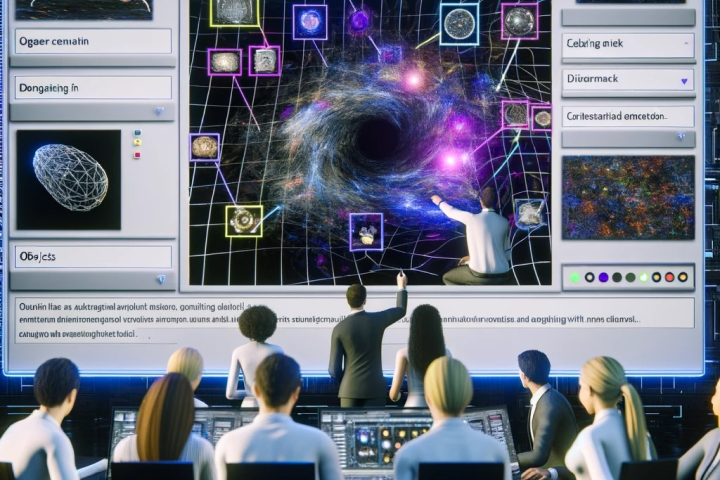
In the world of computer vision, a new star is rising, thanks to a team of researchers led by Chengjian Feng, Yujie Zhong, and Zequn Jie from Meituan Inc., with Weidi Xie from Shanghai Jiao Tong University. They’ve introduced a groundbreaking approach named “InstaGen,” designed to supercharge object detection systems. Think of object detection as the technology that helps computers “see” and understand what’s in a picture, from a cat lounging in the sunlight to cars bustling down a busy street.
Traditionally, teaching computers to recognize objects in images has been a bit like coaching a super-smart toddler. It requires a lot of examples (images) and a lot of patience (time-consuming annotations). The challenge? Gathering and labeling these images is as daunting as preparing for a space mission, requiring meticulous effort and an abundance of time.
Enter the game-changer: generative models, or in simpler terms, a kind of AI that can create new images from scratch based on descriptions. It’s like having an artist who can paint any scene you describe. Until now, these AI artists could create beautiful images, but they couldn’t tell you much about what’s in those images. That’s where InstaGen shines, acting like a bridge that helps these AI artists not only create images but also understand and describe every object in the scene.
The secret sauce behind InstaGen is what the team calls an “instance-level grounding head.” This might sound complex, but imagine it as a smart label maker that can tag every object in the picture with its name and outline. This tool helps InstaGen to teach itself to recognize and label new objects in the images it creates, expanding its vocabulary and understanding of the world.
The method they’ve devised is quite ingenious. They start with a base model trained to generate images and give it a crash course in object detection using existing datasets. It’s akin to giving an artist a quick lesson in anatomy to help them draw people more accurately. Then, they introduce a special module that helps the system to draw bounding boxes around each object, essentially teaching the AI to not just create but also annotate images.
The results? Impressive. By training object detectors on these AI-generated and self-annotated images, the team saw significant improvements. In scenarios where the system had to recognize objects it hadn’t seen before, the accuracy jumped by 4.5 points. And in cases where data was scarce, the improvements ranged from 1.2 to 5.2 points. These numbers might seem small, but in the world of AI, they’re a big deal, indicating a substantial leap forward in performance.
But InstaGen isn’t just a technical marvel; it’s a beacon of practical possibilities. It promises to slash the time and resources needed to develop and update object detection systems. This could mean faster advancements in autonomous vehicles, more efficient surveillance systems, and even more immersive augmented reality experiences.
Perhaps the most exciting aspect of InstaGen is its ability to adapt, and learn about new objects on the fly. This adaptability could revolutionize how detection systems keep pace with the ever-evolving tapestry of our visual world, from the latest gadgets to new species discovered in the wild.
“InstaGen: Enhancing Object Detection by Training on Synthetic Dataset” is more than just an academic paper; it’s a glimpse into a future where AI can learn to see and understand our world with ever-increasing clarity and efficiency. It’s a step towards making machines better helpers, capable of understanding the visual nuances of our world with a little more depth and a lot more accuracy.

Our vision is to lead the way in the age of Artificial Intelligence, fostering innovation through cutting-edge research and modern solutions.